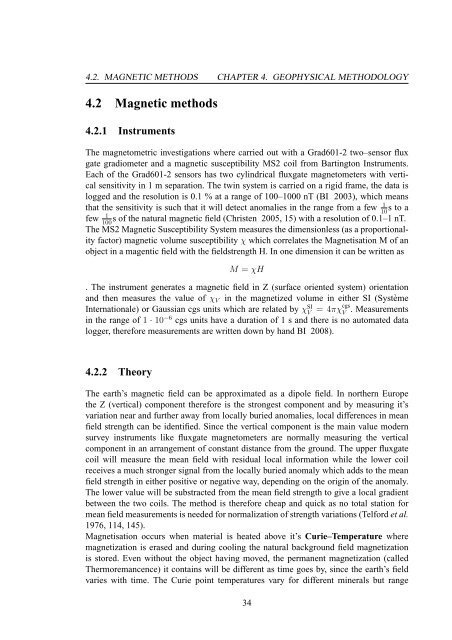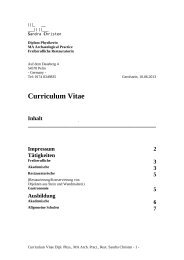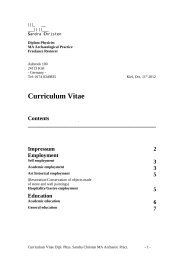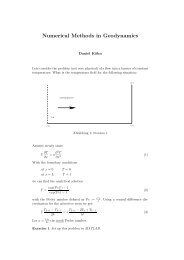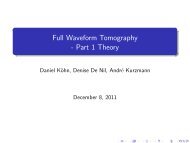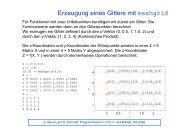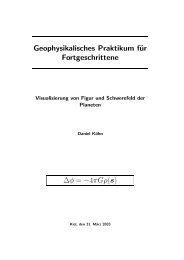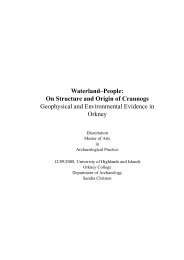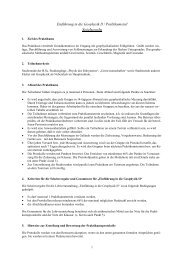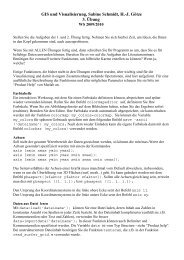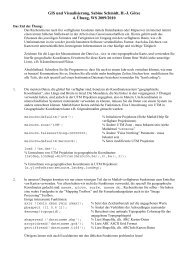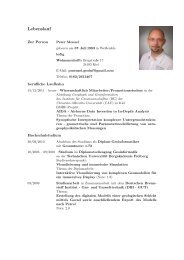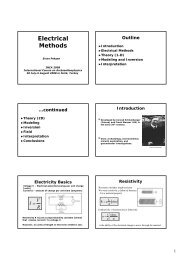Waterland–People: On Structure and Origin of Crannogs ...
Waterland–People: On Structure and Origin of Crannogs ...
Waterland–People: On Structure and Origin of Crannogs ...
You also want an ePaper? Increase the reach of your titles
YUMPU automatically turns print PDFs into web optimized ePapers that Google loves.
4.2. MAGNETIC METHODS CHAPTER 4. GEOPHYSICAL METHODOLOGY<br />
4.2 Magnetic methods<br />
4.2.1 Instruments<br />
The magnetometric investigations where carried out with a Grad601-2 two–sensor flux<br />
gate gradiometer <strong>and</strong> a magnetic susceptibility MS2 coil from Bartington Instruments.<br />
Each <strong>of</strong> the Grad601-2 sensors has two cylindrical fluxgate magnetometers with vertical<br />
sensitivity in 1 m separation. The twin system is carried on a rigid frame, the data is<br />
logged <strong>and</strong> the resolution is 0.1 % at a range <strong>of</strong> 100–1000 nT (BI 2003), which means<br />
that the sensitivity is such that it will detect anomalies in the range from a few 1 s to a 10<br />
few 1 s <strong>of</strong> the natural magnetic field (Christen 2005, 15) with a resolution <strong>of</strong> 0.1–1 nT.<br />
100<br />
The MS2 Magnetic Susceptibility System measures the dimensionless (as a proportionality<br />
factor) magnetic volume susceptibility χ which correlates the Magnetisation M <strong>of</strong> an<br />
object in a magentic field with the fieldstrength H. In one dimension it can be written as<br />
M = χH<br />
. The instrument generates a magnetic field in Z (surface oriented system) orientation<br />
<strong>and</strong> then measures the value <strong>of</strong> χ V in the magnetized volume in either SI (Système<br />
Internationale) or Gaussian cgs units which are related by χ SI<br />
V = 4πχcgs V . Measurements<br />
in the range <strong>of</strong> 1 · 10 −6 cgs units have a duration <strong>of</strong> 1 s <strong>and</strong> there is no automated data<br />
logger, therefore measurements are written down by h<strong>and</strong> BI 2008).<br />
4.2.2 Theory<br />
The earth’s magnetic field can be approximated as a dipole field. In northern Europe<br />
the Z (vertical) component therefore is the strongest component <strong>and</strong> by measuring it’s<br />
variation near <strong>and</strong> further away from locally buried anomalies, local differences in mean<br />
field strength can be identified. Since the vertical component is the main value modern<br />
survey instruments like fluxgate magnetometers are normally measuring the vertical<br />
component in an arrangement <strong>of</strong> constant distance from the ground. The upper fluxgate<br />
coil will measure the mean field with residual local information while the lower coil<br />
receives a much stronger signal from the locally buried anomaly which adds to the mean<br />
field strength in either positive or negative way, depending on the origin <strong>of</strong> the anomaly.<br />
The lower value will be substracted from the mean field strength to give a local gradient<br />
between the two coils. The method is therefore cheap <strong>and</strong> quick as no total station for<br />
mean field measurements is needed for normalization <strong>of</strong> strength variations (Telford et al.<br />
1976, 114, 145).<br />
Magnetisation occurs when material is heated above it’s Curie–Temperature where<br />
magnetization is erased <strong>and</strong> during cooling the natural background field magnetization<br />
is stored. Even without the object having moved, the permanent magnetization (called<br />
Thermoremancence) it contains will be different as time goes by, since the earth’s field<br />
varies with time. The Curie point temperatures vary for different minerals but range<br />
34


